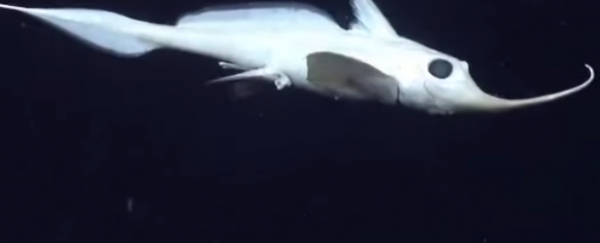Captured off the northeast coast of the US, this footage of a smallspine spookfish reveals the ethereal beauty of deep-sea life.
Meet the smallspine spookfish (Harriotta haeckeli), a stunning creature that lives in the depths of the ocean more than 2,600 metres below the surface. The species is known from just a few specimens found off the coast of Greenland, the Canary Islands and New Zealand, but a number of recent sightings have led researchers to suggest that its range is more widespread in super-deep waters.
This particular specimen was filmed by the NOAA Okeanos Explorer Program swimming 10 metres above the seafloor in Hydrographer Canyon, which is located 140 kilometres off the coast of Nantucket Island in the US.
This spookfish belongs to the family Rhinochimaeridae, commonly known as long-nosed chimaeras. Their characteristic elongated snouts can be conical or paddle-shaped, and they're covered in a series of sensory nerve endings to help them track down prey. They also have a venomous spine running through their first doral fins, which they use as a defense mechanism. The smallspine spookfish is one of the smallest known species of long-nosed chimaera, growing to no more than 72 centimetres, whereas the narrownose chimaera (Harriotta raleighana) grows to a very impresive 1.5 metres long.
Practically nothing is known of the smallspine spookfish's biology, ecology, or reproductive behaviours, but current evidence suggests that it's a pretty rare species. There are no confirmed threats to its population, but the continual growth of deepwater fishing operations around the world could be having a detrimental effect on their numbers.
Sources: NOAA Ocean Explorer, ICUN Redlist
